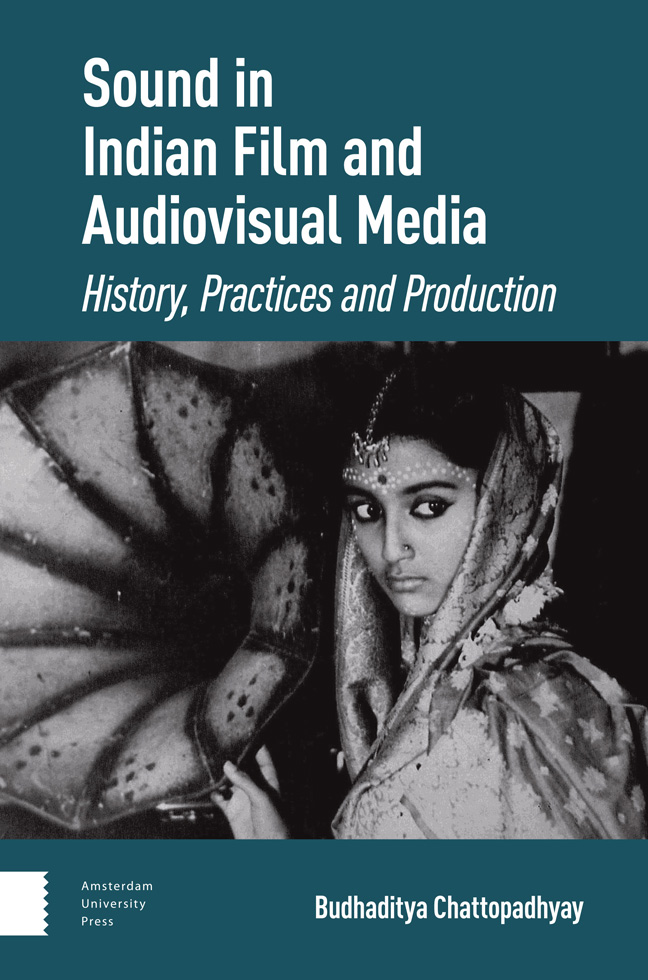Book contents
- Frontmatter
- Contents
- Acknowledgements
- 1 Introduction
- 2 The Technological Frameworks
- 3 Direct Sound and Early Talkies
- 4 Sound of the Golden Age
- 5 Tracing the Sound in Satyajit Ray’s Film-works
- 6 Popular Films from the Dubbing Era
- 7 Parallel Sounds, Radical Listening – Part I
- 8 Sholay, Stereo Sound and the Auditory Spectacle
- 9 The Advent of Digital Sync Sound
- 10 The Surround Revolution
- 11 Sound in the Audiovisual Media Arts
- 12 Parallel Sounds, Radical Listening – Part II
- 13 A Concluding Voiceover
- Bibliography
- Filmography
- Index
11 - Sound in the Audiovisual Media Arts
Published online by Cambridge University Press: 20 February 2024
- Frontmatter
- Contents
- Acknowledgements
- 1 Introduction
- 2 The Technological Frameworks
- 3 Direct Sound and Early Talkies
- 4 Sound of the Golden Age
- 5 Tracing the Sound in Satyajit Ray’s Film-works
- 6 Popular Films from the Dubbing Era
- 7 Parallel Sounds, Radical Listening – Part I
- 8 Sholay, Stereo Sound and the Auditory Spectacle
- 9 The Advent of Digital Sync Sound
- 10 The Surround Revolution
- 11 Sound in the Audiovisual Media Arts
- 12 Parallel Sounds, Radical Listening – Part II
- 13 A Concluding Voiceover
- Bibliography
- Filmography
- Index
Summary
Abstract: The eleventh chapter is dedicated to the study of the creative practices of sound in other audiovisual media art productions such as interactive installations, digital media artwork, new media, video and sound art. Several artworks, projects, and initiatives are discussed in this chapter to draw an overview of the nascent but developing field of sound art in the Indian subcontinent due to globalization, planetary mobility, and media community exchanges. Focus is given to young artists who are experimenting with sound in or outside of cinematic contexts, and how these independent practices expand the scope of sound and listening in the contemporary (media) arts fields, challenging their inherent Eurocentrism.
Keywords: audiovisual, media arts, sound art, Indian subcontinent, globalization, decoloniality
Media Arts in the Global Souths
Traditional artistic and cultural sound practices in South Asia have a tenuous relationship with modernist media such as sound recording, photography, film, and radio exported from the colonial West. In the realm of sound practices, for example, recording technology’s invasion of South Asia and many parts of the colonized Global Souths had a mutating effect on traditional practices and indigenous technologies (e.g., pre-colonial instruments and tuning systems). From the earliest days of sound recording, modernist technologies shared a fraught relationship with pre-colonial South Asian cultures: local practitioners strongly resisted against their voices and sounds being recorded. Their contention and collective resistance to media imperialism and colonization was first recognized in the early-1970s when so-called developing countries began to criticize the dominance developed countries still held over their media and use of media technologies, a continuation of the control used to quantify and surveil colonial subjects.
And yet, a cultural melange has also had mutually beneficial aspects: the two spheres have become entangled, coalescing, and adjusting to one another, rather than having a binary and temporally linear relationship (e.g., tradition versus modernity, pre-modern versus modern). If we study the introduction of media technologies to the Global Souths, for example in India, modernist media did have a mutating influence, but colonial interventions also created transformative contexts in which inter and cross-cultural confluences could take place, and hybrid forms of art and aesthetic expressions emerged.
Artists constantly redefine the traditional categories of arts and crafts by incorporating emerging technologies into their artworks. Media art, which flourished in the early twentieth century, often depends on new technological components.
- Type
- Chapter
- Information
- Sound in Indian Film and Audiovisual MediaHistory, Practices and Production, pp. 183 - 198Publisher: Amsterdam University PressPrint publication year: 2023
- 1
- Cited by



